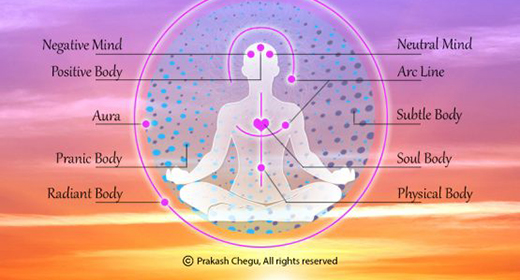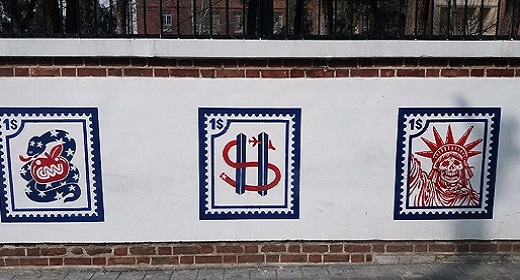by David Hutt: Like viruses, conspiracy theories travel around the globe. But are they always unhealthy?
In 1964, the American historian Richard J. Hofstadter altered the way we think about conspiracy theories with his famous essay, “The Paranoid Style in American Politics”. For Hofstadter, one of the first academics to look seriously at the wild claims then spreading throughout the United States, belief in conspiracy theories was a sign of a faulty “personality” alive in the American body-politic, a delusionary fear of authority that dated back to the American Revolution.
Observers of American politics of 2020 may agree with Hofstadter: there does seem to be something peculiarly paranoid about the way Americans think. In April last year, just months after the Covid-19 pandemic began, the Pew Research Centre found that 29 per cent of Americans thought the virus was artificially created. In October, before Donald Trump’s defeat, a YouGov poll found that half his supporters reportedly believed in the “QAnon” conspiracy theory, which claims a cabal of paedophiles was trying to bring down his presidency.
But the study of conspiracy theories has come a long way since 1964. In 1982, Gordon Wood, another noted American historian, would flip Hofstadter’s argument on its head by writing that “the belief in plots was not a symptom of disturbed minds but a rational attempt to explain human phenomena in terms of human intentions and to maintain moral coherence in the affairs of men.” More recent anthropologists and social scientists have suggested they are the result of in-built human biases, rational expressions of past oppression and of prudent mistrust in elites, or just the desperate howls of the disenfranchised.
One of the biggest leaps has been to study conspiracy theories outside of America. For Hofstadter, conspiracy theories were the result of the paranoid American mind. Academics today, however, are busy exploring how they are part of the universal mind, pervasive in democracies and authoritarian states alike. In almost every country in the world, local populations question whether a political leader was assassinated by the state; whether a neighbouring country is secretly plotting to invade theirs; and whether diseases are really just a by-product of nature or, instead, designed to wipe out a certain section of society.
More than most other years, 2020 demonstrated that conspiracy theories occur all over the world. A study by the University of Cambridge last year found that 22 per cent of British respondents and 23 per cent of Americans thought Covid-19 was engineered in a Wuhan lab. But so too did 33 per cent of Mexicans. Another study, published in the Vaccines journal in January, found that 59.5 per cent of respondents in Jordan, Kuwait and other Arab countries believed Covid-19 was man-made. The YouGov-Cambridge Globalism Project last year found that nearly 60 per cent of Nigerians, 40 per cent of South Africans and 28 per cent of Germans thought official Covid-19 fatality rates had been exaggerated.
Crudely put, those who study conspiracy theories can be broken down into two groups. Relativists, like Hofstadter, look to national culture and localised reasons to explain such theories. Universalists, on the other hand, attempt to explain such theorising through the intricacies and defects of the human mind – from our natural biases to our evolutionary instinct to find easy answers to complex issues. Academics also distinguish between conspiracy theories from above and conspiracy theories from below. There are theories espoused by those with political power, designed to help them keep it; and theories spread by those without power, designed to express their concerns. In his new book Is It Tomorrow Yet? Paradoxes of the Pandemic, Ivan Krastev draws a distinction between the politics of anxiety and the politics of fear. Demagogues fuel fear with lies. Oppressed populations spread wild rumours that, while not always true, indicate their anxiety.
***
Conspiracy theories are essential to the rule of today’s dictators. Hungarian prime minister Viktor Orbán has bolstered his increasingly authoritarian government by concocting an anti-Semitic conspiracy theory that claims George Soros, a wealthy Hungarian, is plotting to flood the country with Muslim migrants and destroy the nation, which Orbán’s government now calls a “Christian democracy”. Vladimir Putin’s Russia has been accused of pumping out and stoking numerous conspiracy theories globally, to weaken western governments. Cambodian prime minister Hun Sen, now one of the world’s longest serving leaders, in power since 1985, forcibly dissolved the country’s only viable opposition party in 2017 over spurious claims it was plotting a US-backed coup, a charge that not even his own government wants to try proving in court. Beyond such outright fictions, governments around the world whip up paranoia to cement their control. The ayatollahs and autocrats of Iran have known for decades they can galvanise support by denouncing the “Great Satan” that is the United States.
Like viruses, conspiracy theories easily pass between cultures – including some of the most insidious, long-standing ones. In October 2003, hundreds of international dignitaries packed into a convention centre in Malaysia for the Organisation of Islamic Cooperation’s annual summit. Malaysia’s outgoing prime minister, Mahathir Mohamad, stated: “1.3 billion Muslims cannot be defeated by a few million Jews”. He added: “[Jews] invented and successfully promoted socialism, communism, human rights and democracy so that persecuting them would appear to be wrong. With these, they have now gained control of the most powerful countries and they, this tiny community, have become a world power. We cannot fight them through brawn alone. We must use our brains also.” That wasn’t inherently surprising. Mahathir is a known anti-Semite (albeit in a country with no officially registered Jews) and Mein Kampf can be found for sale in Malaysian bookshops. But Viren Swami, a professor of social psychology at the UK’s Anglia Ruskin University, told me that when Mahathir and other nationalists from the Muslim-Malay majority say “Jews”, they might actually mean “Chinese”. Malaysia’s strict “harmony” laws censor speech about race and religion, making it fraught to openly chastise the country’s ethnic-Chinese community, who make up about a quarter of the population.
If replacing “Chinese” with “Jews” was Mahathir’s intended dog-whistle, he was hardly being original. In 1914, the Siamese King Vajiravudh published a book titled The Jews of the Orient, which derided the ethnic-Chinese communities of Southeast Asia in similar terms to the anti-Semites vilifying Jews of Europe. The “Jews of Asia” were an elite foreign cabal determined to subjugate the indigenous populations to serfdom and poverty, a conspiracy theory first spread by European colonisers as a “divide-and-rule” tactic as early as the 17th century. This is an example of what we may call the “ghosts of paranoia”, where a new conspiracy theory leeches off a past one and updates it to fit a new setting, just as the Nazis updated mediaeval anti-Semitism, and 9/11 “truthers” took their cues from past theories of alleged “false-flag” events. Even Covid-19 conspiracies are a dull repetition of those that spread in 2013, after a Russian scientist claimed that severe acute respiratory syndrome (Sars) was man-made.
***
But these are government-propagated myths. What about conspiracy theories that arise from below? In the early 2010s, Elizabeth Butt, an anthropologist at the University of Victoria, began noticing odd claims made by the people of West Papua, an area jutting off of the islands of New Guinea that, according to an embattled independence movement, has been “occupied” by Indonesia since 1962. According to the locals, the authorities loyal to the central government in faraway Jakarta were intentionally sending prostitutes infected with HIV to the region in order to wipe out the indigenous population. Of course they weren’t, but in 2013 Butt published a paper in which she called this conspiracy theory a sign of “prudent paranoia” by a local population that has been badly treated by the central government for decades. When a national health survey was released, Butt told me in 2015, it found that “HIV is much more prevalent among Papuans than non-Papuans. Healthcare is politics by other means.”
Similar theories in the 1990s in South Africa and Zambia led to government boycotts of HIV medicine, with disastrous consequences. According to a 2005 study reported in the Lancet, an estimated 16 per cent of the African American community believes that HIV was manufactured by the US government to wipe out the population. In our globalised era, wild theories spread instantly, as we have recently seen with Covid-19 conspiracy theories.
***
Returning to the academics in the field, the relativists – who look at national culture to explain conspiracy theories – also investigate why these theories appear to propagate at certain times in human history. Some recent commentators have looked back to the French historian Marc Bloch, who observed in 1921 that conspiracy theories require the right sort of social conditions. In his time: a society fractured by war. The polarising kulturkampf in the US and Europe today could be regarded as an equally suitable terrain. Others look for explanations through technological change.
The historian Niall Ferguson, for instance, has compared the spread of wild conspiracies and “fake news” following the invention of the printing press in 15th-century Germany with the rise of social media in our own century. Both of these major communication revolutions, he observed, not only disrupted traditional public spheres but also radically altered whose opinion the public trusted. The invention of the printing press led, amongst other events, to the European witch trials. Once ordinary people could read the Bible, priests were no longer the arbitrators of the gospel truth, just as politicians and scientists today are no longer the arbitrators of fact from fiction, now that the average person in the west has access to almost the
entire catalogue of human thought, through the smartphone in their pocket.
On the surface, the relativists have a point. After all, isn’t it reasonable to conclude that when placed in a democratic country, like the US, a conspiracy theory has a very different meaning than when located in, say, authoritarian parts of Asia or Africa? What is an authoritarian system of government if not a conspiracy to deny rights to citizens? It might be laughable for an American to believe that their democratic government openly plots “false-flag” operations or is governed by a cabal of child molesters who will be overthrown by a coming rapture. Less laughable, though, for people in non-democratic countries, where governments and elites regularly do engage in conspiracies. Indeed, especially in countries without free-speech rights, rumours about “open secrets”, spread by word of mouth or now via social media, are the chief way such information is passed around, whether true or not. After all, “conspiracy” derives from the Latin word conspirare, literally meaning “to breathe together”.
People who have suffered from imperialism may have more reason to be more fearful of grand promises made by foreigners; the people of post-communist Eastern Europe may have more reason than their Western European counterparts to be suspicious of the authorities. But this doesn’t explain why a significant number of people across countries believe in conspiracy theories, and often in pretty much the same theory (adjusted for local consumption). Nor, in fact, does geography change the effect that believing a conspiracy theory has on the person, which can be the same for a Vietnamese citizen who knows he’s living in a communist state as for an American who believed, under Trump, that he was living in an authoritarian one.
***
Charting conspiracy theories through historical moments is also fraught. While 2020 might have seemed like the year of the conspiracy theory, the effects are trifling compared to, say, how the world between 1933 and 1945 was shaped by the Nazi party’s twin conspiracy theories of “Judeo-Bolshevism” and the dolchstoßlegende, the “stab-in-the-back” myth. Almost two millennia of European religious history was defined by the claim of the Jewish blood-libel. For centuries, European fratricide was fuelled by imagined Popery and Protestant conspiracies. Even today’s most pernicious of conspiracy theories, anti-vaxxing, has existed since vaccines were first created – and indeed, it is a less risky stance to take today given the quality of healthcare now available. Benjamin Franklin refused to vaccinate his family against smallpox, a decision he came to regret when his son died of the disease in 1736.
To relativise conspiracy theories is also an attempt to solve them, to neatly separate fact from fiction and identify the conditions in which they multiply. Indeed, like the conspiracy theories themselves, conclusions drawn about them tend to offer palatable answers. If political polarisation is the cause, then the solution is less polarisation. If it’s because of “fake news”, we must simply censor more false content. If people are more willing to believe wild rumours because they cannot trust their authoritarian governments, then the problem will be rectified through democracy.
But what if there are no easy solutions? What if conspiracy theorising is not just universal across all countries and cultures but also ever-present across time, a defect of human thinking that won’t disappear (as some universalists say)? If this is the case, the question is: how do we live with them? A 2010 paper by the sociologist Ted Goertzel notes: “Scientists will never reach a consensus with the ‘flat-earthers’ or with those who believe the earth was created in 4004 BC. Nor do they need to; all that is required is a clearly specified degree of consensus among scientists who base their conclusions on empirical data.”
It is something of a cliche to say that conspiracy theories are, to use Karl Marx’s dictum, “the opium of the people”. But not when one actually considers what he meant by this. Marx never supposed religion to be mind-dulling or mind-stimulating, but rather a part of humans’ fundamental need to protest against inhuman conditions, “the heart of a heartless world . . . the spirit of a spiritless situation”. And he meant this quip only in the context of secular criticism, which, he wrote, has “plucked the imaginary flowers from the chain, not so that man will wear the chain that is without fantasy or consolation but so that he will throw it off and pluck the living flower.” In a similar fashion, do we aspire to simply end the chain of conspiracy theorising or should we, instead, “pluck the living flower”?
The claim against conspiracy theories is that they are inherently unhealthy to our societies. When viewed from a non-democratic state, however, their significance takes on new meaning. And by understanding that conspiracy theorising is a part of us, not a result of geography or time, we may be able to defang the worst of it but maintain the contingent parts that are useful: scepticism of those in power, and the questioning of received wisdom.










































